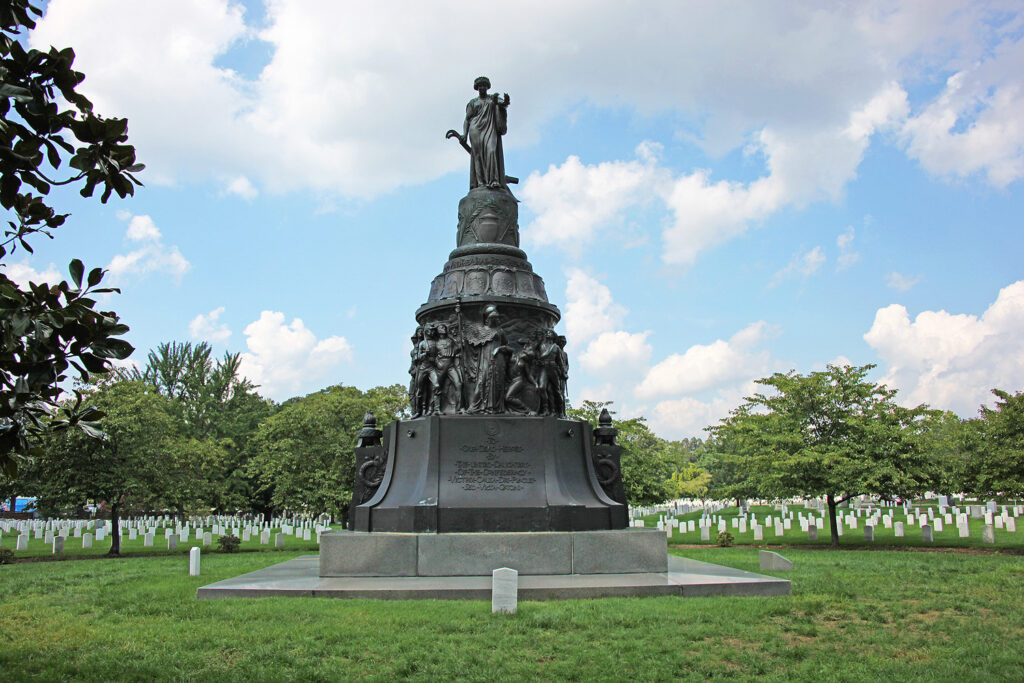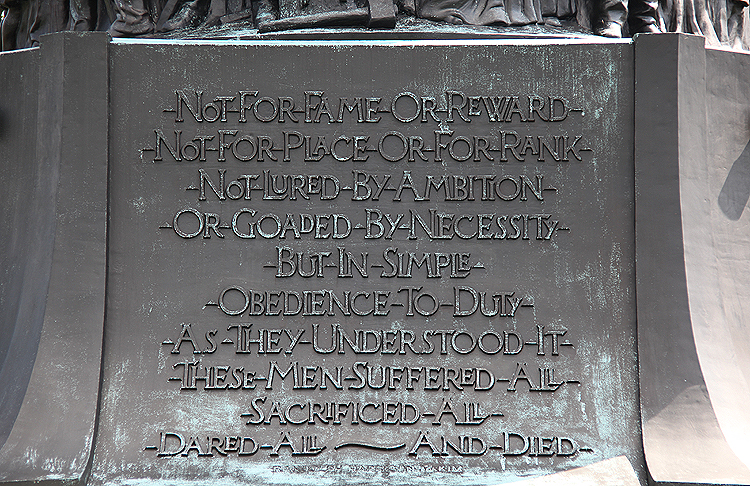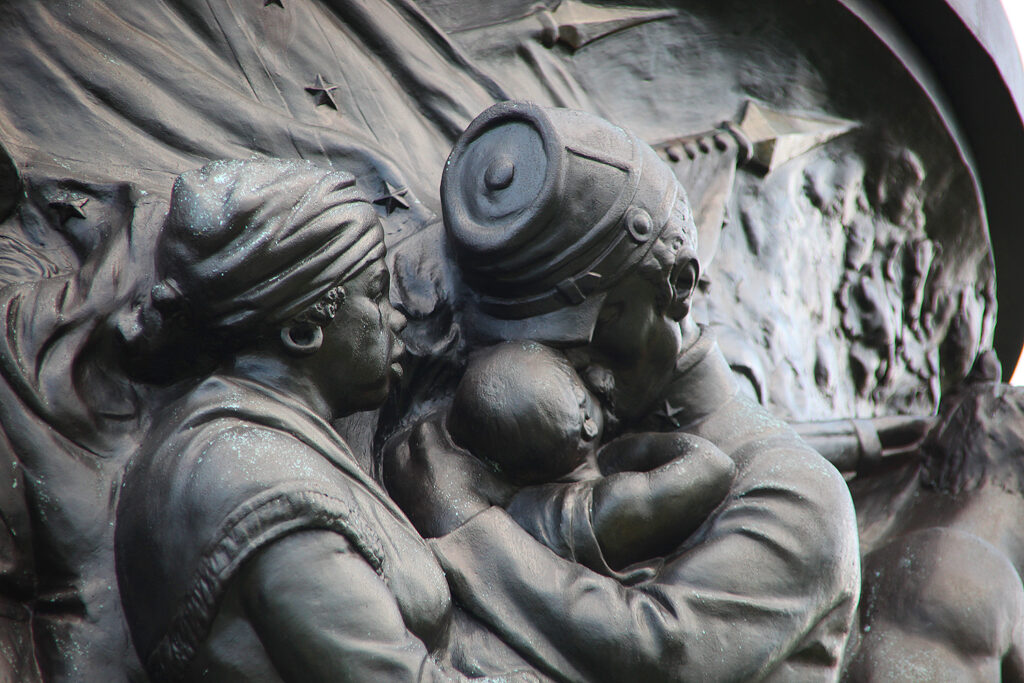The Civil War and The Confederacy
The American Civil War, spanning from 1861 to 1865, was a pivotal moment in the nation’s history, marking a period of profound upheaval and transformation. At its core, the Civil War was a conflict driven by the issue of slavery and the moral, economic, and political divisions it wrought upon the United States. The Confederate states, comprised of Southern states that seceded from the Union, sought to preserve their economic and social system, which was fundamentally built upon the institution of slavery.
Slavery, as an institution, represented one of the gravest moral failings in American history. It involved the brutal exploitation and dehumanization of millions of African Americans, who were forcibly enslaved, subjected to unimaginable atrocities, and denied even the most basic human rights. The institution of slavery not only perpetuated widespread suffering and injustice but also served as a fundamental contradiction to the principles of freedom and equality upon which the nation was founded.
The Civil War, therefore, was not simply a struggle over states’ rights or regional differences but a moral reckoning with the inherent immorality of slavery itself. The Confederate cause, rooted in the defense of slavery and white supremacy, stood in stark opposition to the ideals of liberty, justice, and equality enshrined in the Declaration of Independence and the United States Constitution.
Despite efforts by some Confederate apologists to revise history and portray the Civil War as a noble struggle for states’ rights or Southern independence, the reality remains clear: the Confederate states seceded from the Union to protect and perpetuate the institution of slavery. The Confederate leadership explicitly articulated their commitment to maintaining slavery as a cornerstone of their society, viewing it as a fundamental right and economic necessity.
In this context, the Confederate Monument at Arlington National Cemetery takes on a troubling significance. While it seeks to honor the soldiers who fought for the Confederacy, the cause they fought for is inherently linked to the maintenance of slavery and the perpetuation of a system built upon racial hierarchy and oppression. The monument’s inscription and imagery attempt to portray Confederate soldiers as noble defenders of their homeland, valorizing their actions while downplaying the role of slavery in causing the Civil War.
However, to uncritically celebrate the Confederate cause is to perpetuate a dangerous myth—one that sanitizes the horrors of slavery and whitewashes the Confederacy’s legacy of oppression and injustice. The Confederate Monument at Arlington National Cemetery, like all Confederate symbols, must be understood within the context of this troubling history. It serves as a reminder of the enduring legacy of racism and white supremacy in America, and the ongoing struggle for racial justice and equality.

Construction and Design
The monument was designed by Moses Ezekiel, a sculptor and Confederate veteran born in Virginia in 1844. Ezekiel’s commission to design the monument was emblematic of a broader cultural movement seeking to memorialize the Confederate cause. Despite his talent as a sculptor, Ezekiel’s legacy became inevitably tied to the divisive nature of the Confederate Monument at Arlington National Cemetery. As someone who rejected innovation, Ezekiel was criticized for just emulating those who came before him.
“[But his works] are utterly devoid of innovations or daring new modes of representation. His prime concern was the literary and historical idea behind the work…. But he failed to realize, like other 19th-century artists, that noble thoughts alone do not guarantee that the works they inspire will be great art… he frequently sacrificed his design to accurate depiction and photographic truth.”
Sue Eisenfield, (Should We Remove Confederate Monuments — Even If They’re Artistically Valuable?)
The 32-foot-tall pedestal supported a monument featuring 32 life-sized figures, comprising gods, Southern soldiers, and civilians. However, notably, only two figures were African American. This included the portrayal of a Black “mammy” caring for the soldiers’ children. An inscription on the monument reads, “Victrix causa diis placuit sed victa Caton” (“The victorious cause was pleasing to the gods, but the lost cause to Cato”), framed the South’s secession as a noble endeavor, aligning it with the concept of the “Lost Cause.” The statue attempted to depict a narrative of a “faithful” slave, aiming to rewrite history in a manner that favored the Confederate perspective.
The Confederate Monument at Arlington National Cemetery sends a message that glorifies the Confederate cause and its soldiers, framing their actions as noble and heroic. Through its design and inscription, the monument perpetuates a narrative of Southern pride and resilience, emphasizing notions of states’ rights and valor in battle. The depiction of a Confederate soldier standing atop a pedestal evokes a sense of dignity and honor, portraying the soldiers as defenders of their homeland. Additionally, the inscription likely reinforces this message, celebrating the bravery and sacrifice of Confederate soldiers while downplaying the role of slavery in causing the Civil War. Overall, the monument serves as a commemorative symbol that seeks to memorialize the Confederate legacy in a way that emphasizes valor and patriotism, while overlooking the darker aspects of the Confederate cause, such as its defense of slavery and oppression.

Public Perception at the Time of Construction
When the monument was unveiled in 1914, it was generally celebrated by many as a fitting tribute to Confederate soldiers and their cause. There was a prevailing sentiment of nostalgia and reverence for the “Lost Cause” of the Confederacy, fueled by a desire to honor the sacrifices of Confederate veterans and perpetuate a romanticized vision of the South. The monument’s construction was part of a broader cultural movement that sought to memorialize the Confederate legacy and preserve what was perceived as Southern heritage. However, some dissenting voices, particularly from African Americans and abolitionists, recognized the problematic nature of honoring a cause built upon the institution of slavery.
Contemporary Views and Debates
Today, views about the Confederate Monument at Arlington National Cemetery have evolved significantly, reflecting a broader reassessment of its meaning and significance in contemporary society. Many now see the monument as a symbol of racism, oppression, and the Confederacy’s defense of slavery. There is a growing recognition that monuments like these perpetuate a false narrative of the Civil War and glorify a cause that sought to preserve white supremacy. As a result, there have been increasing calls for the removal of Confederate monuments from public spaces, including Arlington National Cemetery.
Efforts for Removal
Efforts to remove the Confederate Monument at Arlington National Cemetery faced significant legal and bureaucratic hurdles due to its location on federal land under the jurisdiction of the U.S. Department of Defense. Removal or relocation of such monuments on federal property requires navigating complex processes involving multiple government agencies and stakeholders.
Despite these challenges, the Biden administration took steps to initiate the process for the removal and relocation of the monument. This decision sparked a heated debate surrounding issues of history, heritage, and symbolism. Advocates for removal argued that Confederate monuments, including the one at Arlington National Cemetery, glorify a cause deeply rooted in racism, slavery, and white supremacy. They contended that allowing such monuments to remain in public spaces perpetuates harm and division by celebrating a legacy of oppression.
Conversely, opponents of removal argued that Confederate monuments hold historical significance and should be preserved as reminders of the nation’s complex past. They emphasized the importance of preserving historical artifacts, even those associated with contentious periods, as a means of acknowledging and learning from past mistakes.
Despite the opposition, the Biden administration remained committed to the removal and relocation of the Confederate Monument at Arlington National Cemetery. In December of 2023, the efforts to remove the monument faced a significant turning point. Initially, a federal judge issued a restraining order, halting the removal process. However, just two days later, another judge ruled that keeping the statue in place was not in the public’s best interest. As a result, the monument was ultimately removed from its location at Arlington National Cemetery. It is planned to be relocated to New Market Battlefield State Historical Park in Virginia,
The removal of the Confederate Monument marked an important moment in the ongoing debate surrounding Confederate symbols in public spaces. It underscored the complexities involved in navigating issues of history, heritage, and racial justice, while also highlighting the importance of addressing past injustices and fostering a more inclusive and equitable society.

Conclusion
In conclusion, the Confederate Monument at Arlington National Cemetery stands as a controversial symbol of a tumultuous period in American history. Erected in 1914 to honor soldiers of the Confederate States of America, the monument encapsulates the enduring legacy of the Civil War and the profound moral questions surrounding the institution of slavery. the Confederate cause, rooted in the defense of slavery and white supremacy, stands in stark opposition to the principles of freedom, equality, and justice upon which the nation was founded. The Civil War represented a moral reckoning with the inherent immorality of slavery, and the Confederate Monument serves as a reminder of the ongoing struggle for racial justice and equality in America.
In contemporary society, views about the Confederate Monument have evolved, reflecting a broader reassessment of its meaning and significance. Many now see the monument as a symbol of racism, oppression, and the Confederacy’s defense of slavery. Calls for its removal from public spaces, including Arlington National Cemetery, underscore the need to confront the troubling legacy of the Confederacy and to foster a more inclusive and equitable society.
As we navigate the complexities of our nation’s history, it is essential to recognize the painful truths of the past while striving to build a better future. The Confederate Monument at Arlington National Cemetery serves as a reminder of the enduring legacy of racism and injustice in America and the ongoing quest for reconciliation and healing. By confronting the uncomfortable truths of our history and working towards a more just and equitable society, we honor the sacrifices of those who fought for freedom and justice, while also acknowledging the painful legacies of our past.
Bibliography
Barakat, Matthew. “Judge Issues Order Keeping Confederate Memorial at Arlington Cemetery for Now.” AP News, AP News, 19 Dec. 2023, apnews.com/article/confederate-memorial-arlington-cemetery-restraining-order-65a00f0e3b49b22547059ee021ec3e82.
Cliff. “Confederate Memorial.” Flickr, Yahoo!, 1 May 2024, flickr.com/photos/nostri-imago/3161938658.
“Confederate Memorial (Arlington National Cemetery).” Wikipedia, Wikimedia Foundation, 9 Feb. 2024, en.wikipedia.org/wiki/Confederate_Memorial_(Arlington_National_Cemetery).
“Confederate Memorial.” Arlington National Cemetery, www.arlingtoncemetery.mil/Explore/Monuments-and-Memorials/Confederate-Memorial. Accessed 1 May 2024.
Eisenfeld, Sue. “Should We Remove Confederate Monuments – Even If They’re Artistically Valuable?” The Forward, 1 Dec. 2017, forward.com/culture/388595/should-we-remove-confederate-monuments-even-if-theyre-artistically-valuable/.
Hines, Richard T. “The Fate of Moses Jacob Ezekiel and His Memorial to the Confederate Dead.” Chronicles, 7 Dec. 2022, chroniclesmagazine.org/view/the-fate-of-moses-jacob-ezekiel-and-his-memorial-to-the-confederate-dead/.
Mayorquin, Orlando, and Rebecca Carballo. “Judge Halts Removal of Confederate Memorial at Arlington Cemetery: [National Desk].” New York Times, Late Edition (East Coast) ed., Dec 19 2023, ProQuest. Web. 30 Apr. 2024 .
“Minutes of the Annual Convention.” Google Books, Google, books.google.com/books?id=N30VAQAAMAAJ&dq=Minutes+convention+%22United+Daughters%22+volume+18&pg=RA1-PA274#v=onepage&q=Minutes%20convention%20%22United%20Daughters%22%20volume%2018&f=false. Accessed 1 May 2024.
“Moses Jacob Ezekiel.” Wikipedia, Wikimedia Foundation, 18 Apr. 2024, en.wikipedia.org/wiki/Moses_Jacob_Ezekiel.
“Opposition Expressed to Removing Arlington Confederate Memorial.” Newsbank.Com, infoweb-newsbank-com.unh-proxy01.newhaven.edu/apps/news/document-view?p=AMNP&docref=news%2F193AA23DB4483378. Accessed 1 May 2024.
